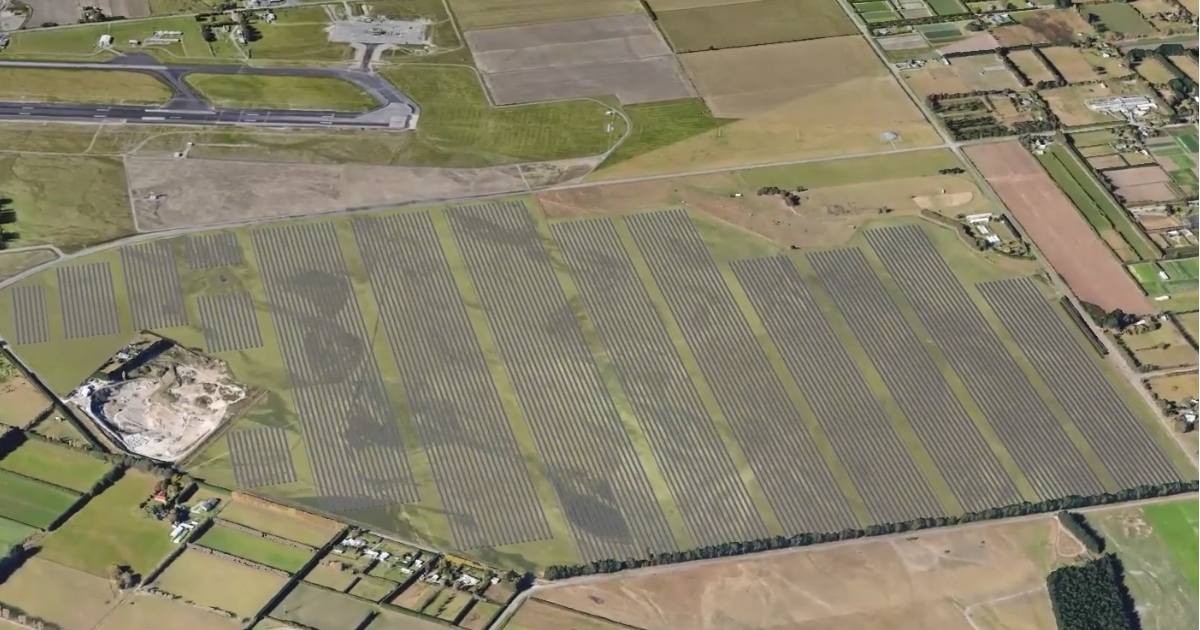It’s taken a while, but large-scale solar is really ramping up across the ditch, with a bunch of big PV projects in the pipeline for New Zealand – and at least one major battery project.
Yesterday, Meridian Energy announced a big battery and solar farm are planned for a site adjacent to the Marsden Point oil refinery north of Auckland. Meridian didn’t mention the capacity of the solar farm, but says it will generate enough electricity to supply the equivalent of 15,000 households. The battery energy storage system (BESS) will be at least 100MW capacity.
It’s expected the battery system will be up and running by the middle of 2023, with solar farm construction to follow.
“Aotearoa is moving to a fully renewable electricity system, which means generation will be made up of more intermittent sources like wind and solar,” said Meridian Head of Renewable Development Rebecca Knott. “During periods of peak demand when there is little sun or wind, we will need stored energy that can be dispatched quickly.”
Meridian estimates 4-5 batteries of this scale will need to be strategically placed around New Zealand by 2030.
150 MW Solar Farm For Christchurch Airport
Meridian’s news follows an announcement early this month from Christchurch Airport regarding a 150MW solar farm project as part of Kōwhai Park, which has been kickstarted with $100 million in funding from Australia’s Solar Bay.
“All going to plan, we envisage Kōwhai Park could be generating zero emission energy from 2025 and will continue to grow over the next 30 years.”
Genesis/FRV 500MW Solar Rollout
In November, NZ Government majority-owned Genesis Energy announced it will be working with FRV Australia to deliver 500MW of solar power capacity across the country over the next five years that will generate approximately 750 gigawatt-hours of clean electricity per annum.
Genesis will hold a 60% stake in the joint venture, adding to its generation portfolio of hydro, wind, geothermal and fossil fuel assets. The latter is Huntly Power Station, which at 953 MW is the largest electricity generation facility in New Zealand by capacity. Huntly is comprised of a 403MW gas unit, two 250MW coal/gas units with an additional 250MW in storage, and a 50.8MW gas unit.
Genesis Energy’s Future-gen programme seeks to displace 2,650GWh of baseload thermal generation with new renewable energy by 2030.
Among other large-scale projects in the pipeline for New Zealand is a 10MW solar farm at Hawke’s Bay Airport. Assuming that proceeds, construction is expected to start late next year; with operations commencing in 2023.
Solar Power In New Zealand
While only a hop, step and a (rather large) jump from Australia, the situation with solar power in New Zealand is very different to here, with solar still a bit player on the Kiwi renewables scene.
In terms of small-scale solar uptake, one of the barriers is cost. A 6kW solar power system costs upwards of NZD $13,000 currently, which is around AUD $12,300. A 6.6kW solar power system installed in Australia costs $5,000 – $9,000; depending on installation scenario and components used.
Large-scale solar is currently very thin on the ground in NZ. As far as I’m aware, the largest operational PV facility in the country is a 2.1MW installation in Kapuni in South Taranaki that began operations in May this year. Next in line is Watercare NZ’s 1MW floating solar plant in Rosedale.


 RSS - Posts
RSS - Posts



Solar for NZ is likely to provide far less benefit than in Australia:
– Auckland is further south than Canberra.
– Taupo is roughly level with Melbourne.
– Wellington is just above Launceston.
– Christchurch is below Hobart.
10kW Solar System Output for Selected Capital Cities
Darwin 42 – 46 kWh
Brisbane 39 – 41 kWh
Sydney 34 – 38 kWh
Canberra 36 – 41 kWh
Melbourne 31 – 36 kWh
Hobart 29 – 33 kWh
So Auckland as Canberra will provide slightly inferior generation to Brisbane or Darwin longitude.
Wellington, Christchurch, or Invercargill however will provide radically inferior generation – Hobart is roughly a third less than Brisbane or Darwin, and much of the South Island is not as far north as Hobart!
And of course this difference is exacerbated by winter v summer differences in day length – as little as 8 hours 35 minutes in winter and up to 15 hours 48 minutes in summer for Invercargill which is almost half an hour less than Hobart in winter, and half an hour more in summer.
Given NZ already has about 57% hydroelectric, 10% geothermal, and apparently 7% wind, is solar a critical sector for the country? A comparison with Iceland is interesting – they typically produce more hydro, far more geothermal, and consume about 9x the average power of the EU..
It’s immoral to take land that can produce food out of production.
Sounds like rooftop solar should be right up your alley:
https://www.solarquotes.com.au/blog/solar-wind-coal-land/